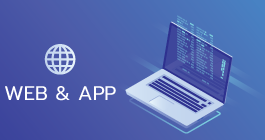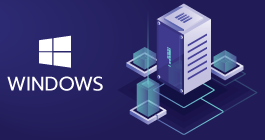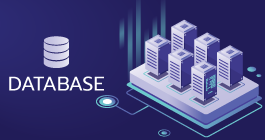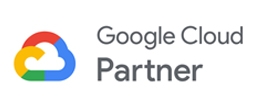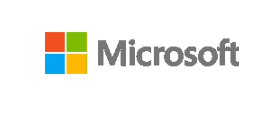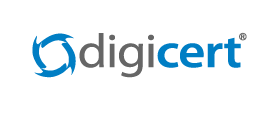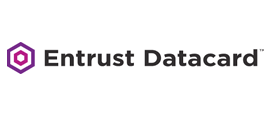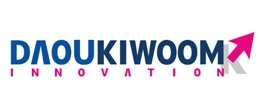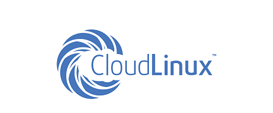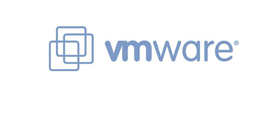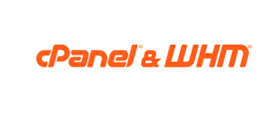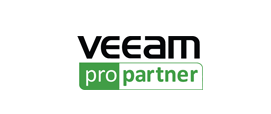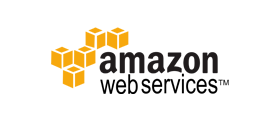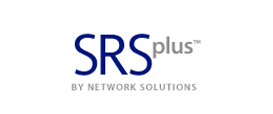-
Welcome to My Website
This is a text box. Write your own content here. This is an excellent place for you to add a paragraph.
Netway Support Center
เราพร้อมบริการคุณ ตลอด 24 ชั่วโมง
Payment & Invoices
Products Knowledge










Zendesk




Other Cloud Products
Technical Knowledge
Website/Install Application & FTP
Linux Technical Knowledge
Windows Technical Knowledge
Database
Blog list (8)
Overview Copilot ใน Microsoft Teams.
Overview Copilot ใน Microsoft Teams Copilot ใน Microsoft Teams จะใช้เนื้อหาจากการแชทและการประชุมใน Teams เพื่อสร้างข้อมูลเชิงลึกและข้อเสนอแนะในดำเนินการ สามารถสรุปการประชุมได้อย่างรวดเร็ว ระบุงานและติดตามผล สร้างวาระการประชุม และถามคำถามเพื่อให้การประชุมมีประสิทธิผลมากขึ้น สรุปประเด็นสำคัญ ดูสิ่งที่คุณพลาดไป และระบุบุคคลที่น่าสนใจ ในแชทที่คุณเพิ่มเข้าไป ใช้งาน Copilot ใน Teams ได้อย่างไร และใช้กับอุปกรณ์ใดบ้าง ต้องซื้อ Microsoft 365 และ Microsoft 365 Copilot License จึงจะเข้าถึง Copilot ใน Teams ได้ โดยสามารถใช้งานได้กับอุปกรณ์และระบบปฏิบัติการดังนี้ Windows, Mac, Android, iOS เว็บไซต์ ใช้ Copilot ในการประชุมและการโทรผ่าน Teams Copilot ใน Teams ช่วยบันทึกรายการดำเนินงานในมุมมองที่แตกต่างกันตามหัวข้อ หรือคำถามที่ยังไม่ได้รับการตอบ สามารถขอให้ Copilot ตอบกลับเป็นตารางได้ด้วย ซึ่งจะสร้างตาราง markdown ที่พร้อมให้คัดลอกและแชร์ได้ อีกทั้งเมื่อประมวลผลบันทึกการประชุมแล้ว ระบบจะสร้างคำถามเพื่อทบทวน เช่น: What questions are unresolved in this meeting? What opinions did team members have about this campaign? Create a table of pros and cons for this campaign. สามารถใช้ Copilot ระหว่างการประชุมและการโทรได้ เช่น โทรแบบตัวต่อตัวและแบบกลุ่ม การประชุมเดี่ยวหรือการประชุมส่วนตัว (Schedule meeting) Channel Meeting Meet Now ข้อกำหนดของ Copilot ในการประชุม (meeting) เปิดการถอดเสียงหรือการบันทึกเสียง โดยผู้เข้าร่วมทุกคนจะเห็นการแจ้งเตือนว่าการประชุมกำลังถูกถอดเสียง (กรณีการประชุมที่เป็นความลับ หากไม่ต้องการใช้ Copilot บันทึกหรือถอดเสียง คลิกวิธีการตั้งค่า) กำหนดเวลาการประชุมในการพูด หากพูดในที่ประชุมน้อยเกินไป Copilot จะแจ้งว่าต้องการข้อมูลเพิ่มเติม การประชุมต้องเกิดจากบุคคลภายในองค์กร การประชุมที่สร้างขึ้นโดยผู้เข้าร่วมภายนอกองค์กร Copilot จะใช้งานไม่ได้ หากผู้เข้าร่วมภายนอกได้รับคำเชิญ แต่ไม่ใช่ผู้นำประชุม Copilot จะใช้งานได้ วิธีเข้าใช้งาน Copilot ในระหว่างการประชุมหรือการโทร ระหว่างการประชุมหรือการโทร ให้เลือก Copilot จาก meeting controls หากการถอดเสียงไม่ได้เปิดอยู่ ระบบจะขอให้คุณเปิดการใช้งาน Copilot จะแสดงในพาเนลด้านขวาของหน้าต่างการประชุม เลือก More prompts หรือพิมพ์คำแนะนำของคุณเองลงในกล่องข้อความนั้น Copilot จะประมวลผลเนื้อหาจากบันทึกการประชุมเพื่อสร้างการตอบกลับ ในการประชุมที่มีการบันทึกหรือถอดเสียง หากเข้าประชุมสายเกิน 5 นาที โปรแกรม Copilot จะถามว่า คุณต้องการสรุปการประชุมที่ผ่านมาหรือไม่ ก่อนจะเลิกการประชุม 10 นาที Copilot จะถามว่า ต้องการบันทึกรายการเพื่อจบการประชุมหรือไม่ วิธีเข้าใช้งาน Copilot หลังการโทร (call) เมื่อสิ้นสุดการโทรแล้ว ให้ไปที่ Call ปุ่มโทรออก ทางด้านซ้ายของ Teams จากนั้นไปที่ Teams call history ใน Teams --> เลือก Ask about this call --> เปิด Copilot วิธีเข้าใช้งาน Copilot หลังการประชุม เมื่อการประชุมสิ้นสุดลง ให้เลือก หัวข้อการประชุม ใน Teams Calendar --> ในหน้ารายละเอียดการประชุมเลือกแท็บ Recap ด้านบน การใช้งาน Copilot ในการแชท Teams Copilot ช่วยให้สามารถถามคำถามเกี่ยวกับการสนทนาในแชท Teams ได้ สามารถใช้ Copilot เพื่อตรวจสอบประเด็นหลัก รายการดำเนินการ และการตัดสินใจจากแชทได้อย่างรวดเร็ว โดยไม่ต้องเลื่อนดูยาวๆ นอกจากนี้ยังเลือกดูไฮไลท์จากการสนทนาย้อนหลัง 1 วัน, 7 วัน หรือ 30 วันที่ผ่านมาได้อีกด้วย หมายเหตุ: Copilot ในแชท Teams จะใช้เฉพาะข้อมูลที่มีอยู่ในแชทที่คุณเปิดเท่านั้น Copilot สามารถใช้งานได้เฉพาะในห้องแชทดังต่อไปนี้ และจะอ้างอิงเฉพาะห้องแชทการประชุมเท่านั้น แต่ไม่ใช่บันทึกการประชุม: การสนทนาแบบตัวต่อตัวและแบบกลุ่ม การสนทนาแบบประชุมเดี่ยวหรือการสนทนาแบบประชุมส่วนตัวตามกำหนดการ Meet Now chats วิธีเข้าใช้งาน Copilot ในการแชท Teams: เลือกแชทใน Teams --> เลือก Copilot ที่มุมขวาบน หน้าต่างจะแสดงขึ้นด้านขวาของการแชท โดยแสดงข้อมูลเบื้องต้นเกี่ยวกับการใช้ Copilot ในการแชท และกล่องเขียนข้อความเพื่อถามคำถามเกี่ยวกับการแชท นอกจากการตอบคำถามและสรุปการสนทนาแล้ว ให้เลือก More prompts ใต้กล่องเขียนเพื่อแนะนำและดึงรายละเอียดที่ต้องการได้อย่างรวดเร็ว การตอบกลับจาก Copilot จะแสดงการอ้างอิงถึงข้อมูลที่เกี่ยวข้องในแชท เมื่อเลือกการอ้างอิงก็จะนำไปยังข้อความที่อ้างอิงในแชททางด้านซ้ายด้วย เฉพาะคุณเท่านั้นที่สามารถดูการสนทนาของคุณกับ Copilot ได้ แต่หากคุณต้องการแชร์การตอบกลับกับผู้อื่น ให้เลือก Copy ที่ด้านบนขวา แต่ละรายการเพื่อคัดลอกข้อความ จากนั้นวางลงในช่องสนทนาแชทอื่น หรือที่อื่นใดก็ได้ การปิด Copilot ในการแชท --> ให้เลือก Copilot อีกครั้ง หรือปุ่ม X ที่ด้านบนขวาของบานหน้าต่าง คำแนะนำการดำเนินการในแชท การดำเนินการที่แนะนำจะปรากฏในแชท Teams และเมื่อเลือกแล้ว Copilot จะเปิดขึ้นทางด้านขวาของแชท ตัวอย่างเช่น เมื่อกลับไปที่แชท หากมีข้อความที่ยังไม่ได้อ่าน 8 ข้อความขึ้นไป คุณอาจเห็นคำแนะนำที่คลิกได้ " Summarize what I've missed." เลือกคำแนะนำเพื่อเปิด Copilot และสร้างสรุปการแชท หมายเหตุ: Microsoft 365 Copilot ใน Teams ไม่สามารถอ้างอิงข้อมูลจากไฟล์ PDF ได้ การอ้างอิงไฟล์หรือแหล่งข้อมูลอื่น Copilot จะแนะนำรายการที่คุณสามารถเลือกได้เป็นข้อความสีน้ำเงิน หากต้องการเลือกสิ่งที่ไม่อยู่ในรายการ ให้พิมพ์การอ้างอิงหลังเครื่องหมายทับ "/" ใน compose box และเลือกจากตัวเลือกที่แสดงให้ใหม่ (generated) เวลาในการตอบคำถาม Copilot ต้องรอการประมวลผลจะช้าเล็กน้อย การพิมพ์คำถามอื่นที่เกี่ยวข้องต่อเนื่อง พิมพ์ได้สูงสุด 20 คำถาม หากต้องการเริ่มการสนทนาใหม่ ให้เลือก New Chat ด้านบนขวาของหน้าต่างแชท สำหรับผู้ที่สนใจ Microsoft 365 Copilot หากสนใจผลิตภัณฑ์ Microsoft 365 Copilot กับ Netway Communication ติดต่อฝ่ายขายได้ทันที Netway Communication ให้บริการด้าน Cloud และ IT พื้นฐานสำหรับธุรกิจ เป็นตัวแทนแบรนด์ไอทีชั้นนำมากมาย ทั้ง Microsoft, Google, Digicert, ฯลฯ เรามีเจ้าหน้าที่พร้อมดูแลคุณ 24 ชม. ติดต่อเราเพื่อสอบถามผลิตภัณฑ์ ขอราคา หรือปรึกษาเรื่องไอที ได้เลยค่ะ Line : @netway (มี @ ด้านหน้า) หรือ https://bit.ly/line-netwayFacebook : m.me/netway.offcialTel : 02-055-1095Email : support@netway.co.thWeb Chat : [[URL]]/ อ้างอิง: support.microsoft.com
วิธีการตั้งค่า Copilot เพื่อใช้เฉพาะในระหว่างการประชุมเท่านั้น
วิธีการตั้งค่า Copilot เพื่อใช้เฉพาะในระหว่างการประชุมเท่านั้น (สำหรับผู้ดำเนินการ/ผู้นำประชุม เท่านั้น) หากไม่ต้องการบันทึกหรือถอดเสียงการประชุมที่เป็นความลับใน MS Teams ก็ยังสามารถใช้งานและมีส่วนร่วมกับ Copilot ได้ โดยใน Meeting Option ตั้งค่าเป็น "Only during the meeting" ดังนี้ เข้าใช้งานโปรแกรม Microsoft Teams ก่อนการประชุม ให้ไปที่ Teams Calendar ปุ่มการประชุม --> เลือกการประชุม เลือก Option ปุ่มตั้งค่า --> More Options ที่หัวข้อ Allow Copilot ให้เลือก "Only during the meeting" หมายเหตุ: หากไม่เห็นตัวเลือกนี้ โปรดติดต่อผู้ดูแลระบบ คลิก ปุ่ม Save ถาม-ตอบ เกี่ยวกับ Copilot ใน Teams Q: หากตั้งค่า Copilot ไว้ที่ "Only during the meeting" Copilot จะเริ่มทำงานทันทีที่การประชุมเริ่มต้นหรือไม่ A: ไม่ ผู้เข้าร่วมประชุมจะต้องเลือก Copilot ในเมนูบนสุดเพื่อเริ่ม Copilot สำหรับการประชุม Q: เมื่อ Copilot เริ่มทำงาน ฉันสามารถปิดมันได้หรือไม่ A: เมื่อ Copilot เริ่มทำงานแล้ว ก็จะทำงานตลอดระยะเวลาการประชุม Q: หากตั้งค่า Copilot ไว้เป็น "Only during the meeting" ฉันจะยังสามารถใช้ Copilot ได้หรือไม่ หากเปิดการถอดเสียงไว้ A: ใช่ Copilot ยังคงทำงานได้ การโต้ตอบทั้งหมดกับ Copilot ในระหว่างการประชุมจะมีข้อมูลการถอดคำพูดเป็นข้อความและบันทึกการสนทนา หลังจากการประชุมสิ้นสุดลง จะมีเฉพาะข้อมูลจากจุดที่บันทึกการสนทนาถูกเปิดใช้งานเท่านั้นที่พร้อมใช้งานใน Copilot Q: หากมีใครเข้าร่วมการประชุมสาย เขาสามารถใช้ Copilot เพื่อเข้าถึงข้อมูลจากการประชุมก่อนหน้านี้ได้หรือไม่ A: ใช่ ผู้เข้าร่วมประชุมจะสามารถเข้าถึงเนื้อหาใดๆ ก็ได้ตั้งแต่เริ่มต้นใช้งาน Copilot Q: ตามนโยบาย ฉันไม่ได้รับอนุญาตให้เริ่มบันทึกการสนทนาหรือบันทึกเสียง ฉันยังสามารถใช้ Copilot ได้เฉพาะในระหว่างการประชุมเท่านั้นหรือไม่ A: ใช่ นโยบายที่มีอยู่จะนำไปใช้กับวิธีการบันทึกบทสนทนา Q: เหตุใด Copilot จึงสามารถทำงานได้เฉพาะในระหว่างการประชุมเท่านั้น? A: Copilot ใช้ข้อมูลการประมวลผลเสียงจากการแปลงคำพูดเป็นข้อความเพื่อสร้างคำตอบเกี่ยวกับสิ่งที่พูด ในระหว่างการประชุม ข้อมูลการแปลงคำพูดเป็นข้อความจะถูกจัดเก็บชั่วคราวในฐานข้อมูลที่จัดการโดย Teams ซึ่งเป็นมาตรฐานเดียวกันกับเอกสารบันทึกการประชุม เมื่อการประชุมสิ้นสุดลง ข้อมูลการแปลงคำพูดเป็นข้อความจะถูกลบทิ้ง Q: มีบันทึกการตรวจสอบการแจ้งเตือนและการตอบกลับหรือไม่ A: ไม่มีบันทึกการตรวจสอบ Q: เหตุใดจึงไม่สามารถโต้ตอบส่วนตัวของผู้เข้าร่วมประชุมได้ในระหว่างประชุมและหลังการประชุม A: ประวัติการโต้ตอบของผู้เข้าร่วมประชุมจะไม่คงอยู่ เนื่องจากผิดกฎเรื่องความเป็นส่วนตัว Q: เหตุใดตัวเลือกการประชุมสำหรับวิธีใช้งาน Copilot สมาชิกทุกคนในองค์กรสามารถมองเห็นได้ ไม่ว่าพวกเขาจะมี License หรือ ไม่มี License ก็ตาม A: จะช่วยให้ผู้จัดการประชุมสามารถกำหนดวิธีใช้ Copilot ในการประชุมได้ แม้ว่าพวกเขาจะไม่มี License ก็ตาม Q: ผู้เข้าร่วมภายนอกสามารถเข้าถึง Copilot ได้เฉพาะในระหว่างการประชุมเท่านั้นหรือไม่ A: ไม่ หากผู้เข้าร่วมภายนอกที่ได้รับอนุญาตเข้าร่วมการประชุมโดยเปิดใช้งานตัวเลือกการประชุมนี้ พวกเขาจะไม่สามารถโต้ตอบกับ Copilot ได้ Copilot ไม่สามารถเข้าถึงข้อมูลการถอดเสียงภายนอกหรือการแปลงคำพูดเป็นข้อความได้ Q: หากองค์กรของฉันปิดใช้งานการถอดเสียงสำหรับการประชุมทั้งหมดของบริษัท และมีผู้ใช้ Microsoft 365 Copilot เปิดใช้งาน Copilot เฉพาะในระหว่างการประชุมเท่านั้น บุคคลนั้นจะสามารถใช้ Copilot ระหว่างการประชุมได้หรือไม่ A: ใช่ หากปิดใช้งานการถอดเสียงสำหรับการประชุมและมีผู้เปิดใช้งาน Copilot เฉพาะในระหว่างการประชุม (ตั้งค่า Copilot during the meeting) ผู้ใช้ที่ได้รับอนุญาตสิทธิ์ Copilot จะสามารถใช้ Copilot ระหว่างการประชุมได้ Q: ทำไม Copilot ถึงถามฉันว่าทุกคนพูดภาษาอะไร A: การเลือกภาษาที่ทุกคนพูดจะช่วยให้มั่นใจได้ว่าการประมวลผลเสียงจะเกิดขึ้นในภาษาที่ถูกต้อง ข้อมูลการแปลงคำพูดเป็นข้อความและการอ้างอิงใดๆ จะถูกสร้างขึ้นในภาษาพูดที่คุณเลือก อย่างไรก็ตาม คุณสามารถถามคำถามกับ Copilot เป็นภาษาใดก็ได้ และ Copilot จะตอบกลับเป็นภาษานั้น Q: ฉันจะเปลี่ยนภาษาพูดหลังจาก Copilot เริ่มทำงานได้อย่างไร A: สามารถเปลี่ยนภาษาพูดได้ผ่านการตั้งค่า คลิกอ่านเพิ่มเติมการตั้งค่าและภาษา ที่ Supported languages สำหรับผู้ที่สนใจ Microsoft 365 Copilot หากสนใจผลิตภัณฑ์ Microsoft 365 Copilot กับ Netway Communication ติดต่อฝ่ายขายได้ทันที Netway Communication ให้บริการด้าน Cloud และ IT พื้นฐานสำหรับธุรกิจ เป็นตัวแทนแบรนด์ไอทีชั้นนำมากมาย ทั้ง Microsoft, Google, Digicert, ฯลฯ เรามีเจ้าหน้าที่พร้อมดูแลคุณ 24 ชม. ติดต่อเราเพื่อสอบถามผลิตภัณฑ์ ขอราคา หรือปรึกษาเรื่องไอที ได้เลยค่ะ Line : @netway (มี @ ด้านหน้า) หรือ https://bit.ly/line-netwayFacebook : m.me/netway.offcialTel : 02-055-1095Email : support@netway.co.thWeb Chat : [[URL]]/ อ้างอิง: support.microsoft.com
การวางแผนภาษีปี 2567 ใช้อะไรมาลดหย่อนเพิ่มเติมเพื่อประหยัดภาษีได้บ้าง
การวางแผนภาษีปี 2567 กับช่วงเวลาที่เหลืออีก 2 เดือน เราจะใช้อะไรมาลดหย่อนเพิ่มเติมเพื่อประหยัดภาษีได้บ้าง 1. ลดหย่อนภาษีเที่ยวเมืองรอง 55 จังหวัด ยังมีเวลาไปเที่ยวกันแล้ว อย่าลืมขอ e-Tax invoice กันนะคะ สามารถลดหย่อนภาษีได้ตามที่จ่ายจริงแต่ไม่เกิน 15,000 บาท ต้องเป็นค่าใช้จ่ายเกี่ยวกับที่พักในโรงแรม / ที่พักโฮมสเตย์ไทย / ค่าที่พักในสถานที่ที่ไม่ใช่โรงแรม ระยะวลาตั้งแต่ 1 พฤษภาคม – 30 พฤศจิกายน 2567 2. ลดหย่อนภาษีค่าสร้างบ้านใหม่ ปี 2567-2568 ใช้สิทธิ์ลดหย่อยภาษีได้ 10,000 บาททุกๆการก่อสร้าง 1 ล้านบาท ลดสูงสุดได้ไม่เกิน 100,000 บาท ต้องเซ็นสัญญาและเริ่มก่อสร้างตั้งแต่ 9 เมษายน 2567 – 31 ธันวาคม 2568 ต้องเป็นการก่อสร้างอาคารเพื่ออยู่อาศัยใหม่ ไม่รวมการเปลี่ยนแปลง ต่อเติม ซ่อมแซม 3. เงินบริจาคที่ลดหย่อนภาษีได้ 2 เท่า ต้องบริจาคผ่านระบบ e-Donation เงินบริจาคเพื่อสนับสนุนการศึกษา เงินบริจาคให้แก่สถานพยาบาลของรัฐ เงินบริจาคสนับสนุนด้านกีฬา เงินบริจาคให้แก่มูลนิธิด้านสาธารณสุข สามารถยื่นภาษีออนไลน์ได้ที่เว็บไซต์ กรมสรรพากร คลิกเว็บไซต์ กรมสรรพากร หัวข้อยื่นแบบและชำระภาษีทุกประเภทแบบ --> คลิกปุ่ม ยื่นแบบออนไลน์ เข้าไปสมัครสมาชิก และทำการยื่นภาษีออนไลน์ได้ตามต้องการ สำหรับลูกค้า เน็ตเวย์ฯ ที่ต้องการรูปแบบใบเสร็จรับเงิน และใบกำกับภาษี อิเล็คทรอนิคส์ บริษัท เน็ตเวย์ คอมมูนิเคชั่น จำกัด ได้พัฒนาระบบ ใบเสร็จรับเงินและใบกำกับภาษี อิเล็คทรอนิคส์ (e-Tax Invoice & e-Receipt) เพื่อให้สอดคล้องกับแนวทางการดำเนินงานตามระเบียบของกรมสรรพากร โดยตั้งแต่วันที่ 1 มีนาคม 2567 เป็นต้นไป บริษัทฯ จะดำเนินการจัดส่งใบเสร็จรับเงิน และ ใบกำกับภาษี อิเล็คทรอนิคส์ (e-Tax Invoice & e-Receipt) ในรูปแบบ PDF File ไปยังอีเมลที่ท่านแจ้งไว้ โดยท่านสามารถเรียกพิมพ์ใบเสร็จรับเงิน และ ใบกำกับภาษี อิเล็คทรอนิคส์ ได้เอง หรือสามารถส่งต่อให้กับผู้เกี่ยวข้องได้ทันที เพื่อความสะดวก รวดเร็ว อ่านประกาศตามที่เคยแจ้ง ที่นี่ Netway Communication ให้บริการด้าน Cloud และ IT พื้นฐานสำหรับธุรกิจ เป็นตัวแทนแบรนด์ไอทีชั้นนำมากมาย ทั้ง Microsoft, Google, Digicert, ฯลฯ เรามีเจ้าหน้าที่พร้อมดูแลคุณ 24 ชม. ติดต่อเราเพื่อสอบถามผลิตภัณฑ์ ขอราคา หรือปรึกษาเรื่องไอที ได้เลยค่ะ Line : @netway (มี @ ด้านหน้า) หรือ https://bit.ly/line-netwayFacebook : m.me/netway.offcialTel : 02-055-1095Email : support@netway.co.thWeb Chat : [[URL]]/
มีอะไรใหม่ใน Copilot in Teams
มีอะไรใหม่ใน Copilot in Teams Microsoft Teams ยังคงพัฒนาอย่างต่อเนื่อง สำหรับการทำงานร่วมกันและการสื่อสารในที่ทำงานยุคใหม่ ด้วยการผสานรวม Copilot ที่ขับเคลื่อนด้วย AI ทำให้ Teams ก้าวข้ามขีดจำกัดโดยสร้างสรรค์วิธีการโต้ตอบกับเทคโนโลยี เพื่อปรับปรุงเวิร์กโฟลว์ ตลอดจนปรับปรุงประสิทธิภาพการทำงานและเพิ่มมูลค่าทางธุรกิจใหม่ๆ การอัปเดตล่าสุดสำหรับ Copilot ใน Teams Enhanced agent capabilities Smarter AI interactions Extra features to support teams in accomplishing tasks more efficiently Copilot ใน Microsoft Teams คืออะไร Copilot คือผู้ช่วยที่ขับเคลื่อนด้วย AI จาก Microsoft ซึ่งฝั่งอยู่ในเครื่องมือต่างๆ เช่น Teams, Word, Excel และ PowerPoint โดยได้รับการออกแบบมาเพื่อช่วยเหลือในงานต่างๆใน Microsoft Teams Copilot ทำหน้าที่ช่วยเหลือผู้ใช้ เช่น: ขั้นตอนกระบวนการอัตโนมัติ การจัดการงาน การวิเคราะห์ข้อมูล การให้ข้อมูลเชิงลึกแบบเรียลไทม์ จุดแข็งสำคัญของ Copilot คือ ความสามารถในการใช้ประโยชน์จากข้อมูลที่มีอยู่ นอกจากนี้ยังสามารถทำงานข้ามแพลตฟอร์มได้อย่างราบรื่น อีกทั้งยังให้คำแนะนำที่นำไปปฏิบัติได้จริง ฟีเจอร์ใหม่ของ Copilot ใน Teams การอัปเดตล่าสุดของ Copilot ใน Teams ฟีเจอร์ใหม่ๆ เน้นให้การโต้ตอบมีประสิทธิผลมากขึ้น Intuitive Productive User-friendly คุณสมบัติการทำงานร่วมกันที่ได้รับการปรับปรุง Copilot สามารถทำงานในทีมได้อย่างราบรื่นยิ่งขึ้น ช่วยจัดระเบียบการประชุมและสรุปการสนทนา รวมถึงให้คำแนะนำแบบเรียลไทม์ระหว่างการสนทนา การสรุปการประชุมอัตโนมัติ : ฟีเจอร์ที่โดดเด่นคือการสร้างสรุปการประชุมโดยอัตโนมัติ หลังจากการประชุมทีม Copilot สามารถสรุปรายละเอียดได้ ไม่ต้องเสียเวลาจดบันทึกอีกต่อไป การจัดการงานอย่างชาญฉลาด : Copilot ช่วยจัดการงานได้อย่างมีประสิทธิภาพมากขึ้น โดยวิเคราะห์จากบทสนทนาในแชทหรือการประชุม ข้อเสนอแนะ AI ที่ดีขึ้น การพัฒนาอัปเดต AI ใหม่ จนมาสู่ Copilot ซึ่งช่วยให้สามารถให้คำแนะนำที่ดีขึ้นตามบริบทปัจจุบันและข้อมูลในอดีตได้ การตอบสนองโดยคำนึงถึงบริบท: ในระหว่างการแชทหรือการประชุมสามารถให้คำตอบที่เกี่ยวข้องมากขึ้น ซึ่งช่วยลดและกรองข้อมูลที่ไม่เกี่ยวข้องได้ ข้อมูลเชิงลึกส่วนบุคคล: เมื่อ Copilot โต้ตอบกับทีม ก็จะเรียนรู้จากพฤติกรรมในอดีต สามารถเสนอข้อมูลเชิงลึกและให้คำแนะนำส่วนบุคคลได้ ตัวอย่าง เช่น สามารถแนะนำเวลาที่ดีที่สุด โดยกำหนดเวลาประชุมตามความพร้อมของผู้เข้าร่วม ประโยชน์ของการใช้ Copilot ใน Teams การสื่อสารที่ดีขึ้น การตัดสินใจที่ได้รับการปรับปรุง การจัดการเวิร์กโฟลว์ที่ดีขึ้น เดินไปข้างหน้าด้วยกัน เหมือนมี AI ในทีม ช่วยเบาแรงในการสรุป พิมพ์งาน หากสนใจผลิตภัณฑ์ อ่านรายละเอียดได้ที่ Microsoft 365 Copilot รับทันที ส่วนลด 15% เมื่อซื้อผลิตภัณฑ์ Microsoft 365 Copilot กับ Netway Communication วันนี้ ถึง 31 ธ.ค. 2024 Netway Communication ให้บริการด้าน Cloud และ IT พื้นฐานสำหรับธุรกิจ เป็นตัวแทนแบรนด์ไอทีชั้นนำมากมาย ทั้ง Microsoft, Google, Digicert, ฯลฯ เรามีเจ้าหน้าที่พร้อมดูแลคุณ 24 ชม. ติดต่อเราเพื่อสอบถามผลิตภัณฑ์ ขอราคา หรือปรึกษาเรื่องไอที ได้เลยค่ะ Line : @netway (มี @ ด้านหน้า) หรือ https://bit.ly/line-netwayFacebook : m.me/netway.offcialTel : 02-055-1095Email : support@netway.co.thWeb Chat : [[URL]]/ อ้างอิง: The Technology Press
7 ตัวอย่าง AI ที่ช่วยธุรกิจขนาดเล็ก
7 ตัวอย่าง AI ที่ช่วยธุรกิจขนาดเล็ก 7 ตัวอย่าง AI ที่ช่วยธุรกิจขนาดเล็ก ปัญญาประดิษฐ์ไม่ใช่เทคโนโลยีที่สงวนไว้สำหรับบริษัทที่มีงบประมาณมากมายอีกต่อไป ในปัจจุบัน ธุรกิจขนาดเล็กสามารถเข้าถึงเครื่องมือปัญญาประดิษฐ์ที่ช่วยได้หลายวิธี เช่น การปรับปรุงกระบวนการทำงาน การปรับปรุงประสบการณ์ของลูกค้า และเพิ่มผลกำไร การเพิ่มขึ้นของโซลูชัน AI ราคาไม่แพงได้เปิดประตูสู่ธุรกิจขนาดเล็ก พวกเขาสามารถใช้ประโยชน์จากเทคโนโลยีอันทรงพลังเหล่านี้ได้โดยไม่ต้องเสียเงินเป็นจำนวนมาก โพสต์นี้จะสำรวจตัวอย่างที่ยอดเยี่ยมเจ็ดประการเกี่ยวกับวิธีใช้ AI เพื่อประสบความสำเร็จในตลาดที่มีการแข่งขัน 1. การปรับปรุงระบบสนับสนุนลูกค้าด้วย AI Chatbots ธุรกิจขนาดเล็กมีพนักงานสำหรับบริการลูกค้าที่มีจำกัด แชทบอทที่ขับเคลื่อนด้วย AI ถือเป็นโซลูชันที่คุ้มต้นทุน โดยจะตอบคำถามทั่วไปของลูกค้าโดยอัตโนมัติ แชทบอท AI เพิ่มความสะดวกให้กับธุรกิจขนาดเล็กได้ เช่น การลดเวลาตอบสนอง แชทบอท AI สามารถจัดการการสนทนาหลายรายการพร้อมกันได้ โดยข้อความตอบกลับอัตโนมัติ ช่วยลดเวลาการรอคอยของลูกค้าได้อย่างมาก แชทบอททำงานตลอด 24 ชั่วโมงทุกวัน ไม่เว้นวันหยุด ลูกค้ายังได้รับคำตอบที่รวดเร็วอีกด้วย ที่เราคุ้นเคยบ่อยๆ เช่น Messenger ในกลุ่มโซเชียล Facebook Business Manager, LINE Official Account การเสริมสร้างประสบการณ์ของลูกค้า แชทบอท AI มีความซับซ้อนมากขึ้น แชทบอทสามารถโต้ตอบการสนทนาทเหมือนมนุษย์ได้ ธุรกิจขนาดเล็กสามารถให้บริการคุณภาพสูงได้โดยไม่ต้องเพิ่มต้นทุนค่าใช้จ่ายทางธุรกิจ 2. การปรับปรุงการตลาดด้วยการวิเคราะห์ที่ขับเคลื่อนด้วย AI การตลาดมีความสำคัญต่อธุรกิจขนาดเล็ก แต่ต้องใช้เวลาและต้นทุนสูง เครื่องมือวิเคราะห์ที่ขับเคลื่อนด้วย AI ช่วยให้ธุรกิจตัดสินใจได้อย่างชาญฉลาดมากขึ้น โดยให้ข้อมูลเชิงลึกตามพฤติกรรม ความชอบ และแนวโน้มของลูกค้า การโฆษณาแบบกำหนดเป้าหมาย AI สามารถวิเคราะห์ข้อมูลลูกค้าเพื่อสร้างแคมเปญโฆษณาที่ตรงเป้าหมาย ช่วยให้มั่นใจได้ว่าธุรกิจต่างๆ จะใช้จ่ายงบประมาณการตลาดอย่างมีประสิทธิภาพ การคาดการณ์แนวโน้มของลูกค้า AI ใช้การวิเคราะห์เชิงคาดการณ์เพื่อคาดการณ์แนวโน้มโดยอิงจากข้อมูลในอดีต ซึ่งช่วยให้ธุรกิจขนาดเล็กสามารถปรับกลยุทธ์ได้แบบเรียลไทม์ ด้วย AI 3. งานประจำวันขับเคลื่อนโดยอัตโนมัติด้วยเครื่องมือ AI เจ้าของธุรกิจขนาดเล็กมักต้องรับมือกับบทบาทต่างๆ ซึ่งรวมถึงการจัดการสินค้าและการตอบคำถามของลูกค้า โดย AI สามารถช่วยลดการทำงานที่ซำ้ซ้อนได้ เช่น การตอบคำถามเดิมๆซำ้ๆ ให้เป็นระบบอัตโนมัติ การจัดการตารางงานและปฏิทิน เครื่องมือ AI สามารถทำให้การจัดตารางเวลาเป็นแบบอัตโนมัติได้ ซึ่งรวมถึงการประชุมลูกค้า การนัดหมาย หรือการทำงานร่วมกันเป็นทีม คุณสามารถผสาน AI เข้ากับแพลตฟอร์มอีเมลและปฏิทินได้ ซึ่งจะช่วยประหยัดเวลาและลดความเสี่ยงจากข้อผิดพลาดของมนุษย์ เช่น Microsoft Teams, Google Workspace การจัดการใบแจ้งหนี้และค่าใช้จ่าย การจัดการการเงินเป็นอีกด้านที่ AI ทำได้ดีกว่า เครื่องมือบัญชี สามารถทำให้การออกใบแจ้งหนี้เป็นไปโดยอัตโนมัติ ติดตามค่าใช้จ่าย และอื่นๆ อีกมากมาย ซึ่งจะช่วยลดภาระงานด้านการบริหารของเจ้าของธุรกิจขนาดเล็ก อีกทั้งยังช่วยให้มั่นใจได้ว่าข้อมูลทางการเงินมีความถูกต้อง 4. เพิ่มประสิทธิภาพการจัดสินค้าคงคลังด้วย AI โดย AI สามารถช่วยปรับสมดุลระดับสินค้าคงคลังได้โดยคาดการณ์ความต้องการได้อย่างแม่นยำ การคาดการณ์ความต้องการ อัลกอริทึม AI วิเคราะห์ข้อมูลยอดขายในอดีต จนถึงปัจจุบันและแนวโน้มของตลาดเพื่อคาดการณ์ความต้องการในอนาคต ซึ่งช่วยให้ธุรกิจขนาดเล็กสามารถสั่งซื้อสินค้าคงคลังได้ในปริมาณที่เหมาะสม ทำให้มั่นใจได้ว่าจะมีสินค้าที่ลูกค้าต้องการอยู่เสมอ การเรียงลำดับใหม่โดยอัตโนมัติ AI สามารถทำให้กระบวนการเก็บสินค้า การจัดเรียงสินค้าใหม่เป็นไปแบบอัตโนมัติได้ โดยสามารถตั้งค่าทริกเกอร์เมื่อระดับสต๊อกสินค้าถึงเกณฑ์ที่กำหนด ซึ่งช่วยให้บริษัทต่างๆ สามารถเติมสต๊อกสินค้าใหม่ก่อนที่สินค้าจะหมด เช่น ระบบ Auto Warehouse 5. การปรับแต่งการโต้ตอบกับลูกค้าด้วย AI เครื่องมือ AI สามารถวิเคราะห์ข้อมูลลูกค้าและให้ข้อมูลเชิงลึก เพื่อสร้างความเชื่อมั่นของลูกค้า คำแนะนำผลิตภัณฑ์เฉพาะบุคคล เครื่องมือที่ขับเคลื่อนด้วย AI จะวิเคราะห์ความชอบและการซื้อในอดีตของลูกค้า โดยดูจากพฤติกรรมการพิมพ์ค้นหา หรือการเข้าชมจากสื่อโซเชียลมิเดียต่างๆข องตัวลูกค้า ซึ่ง AI จะดึงข้อมูลผลิตภัณฑ์ที่น่าสนใจแนะนำให้กับลูกค้า ซึ่งอาจนำไปสู่ยอดขายที่เพิ่มขึ้นและยังรักษาฐานลูกค้าไว้ได้อีกด้วย ทางการตลาด ผู้ช่วยทางธุรกิจต่างๆ เช่น AI ในโปรแกรมกลุ่ม Analytics, Ads ต่างๆ สามารถสร้างแคมเปญการตลาดแบบเฉพาะบุคคลได้ เครื่องมือ AI จะสร้างเนื้อหาให้เหมาะสม โดยสามารถแบ่งกลุ่มลูกค้าตามพฤติกรรม ความชอบ และประวัติการซื้อ 6. การปรับปรุงกระบวนการสรรหาและทรัพยากรบุคคลด้วย AI การจ้างพนักงานที่เหมาะสมถือเป็นเรื่องสำคัญแต่เป็นกระบวนการที่ใช้เวลานาน เครื่องมือ AI เช่น โปรแกรมเกี่ยวกับ Jobs ต่างๆ สามารถปรับกระบวนการสรรหาและทรัพยากรบุคคล (HR) ให้มีประสิทธิภาพมากขึ้น การคัดกรองประวัติการทำงาน AI สามารถสแกนประวัติย่อได้อย่างรวดเร็ว ช่วยลดเวลาในการตรวจสอบใบสมัครด้วยตนเอง ช่วยให้เจ้าของธุรกิจสามารถมุ่งเน้นไปที่การสัมภาษณ์ผู้สมัครที่มีความสามารถสูงได้ การคาดการณ์ประสิทธิภาพการทำงานของพนักงาน AI สามารถวิเคราะห์ข้อมูลพนักงานเว่าผู้สมัครคนใดมีแนวโน้มที่ดี ซึ่งช่วยให้มั่นใจว่าพนักงานใหม่จะมีสามารถที่เหมาะสม นอกจากนี้ยังช่วยลดการลาออกและปรับปรุงประสิทธิภาพการทำงานอีกด้วย 7. การรักษาความปลอดภัยข้อมูลทางไซเบอร์ที่ขับเคลื่อนด้วย AI ความปลอดภัยทางไซเบอร์เป็นปัญหาที่เพิ่มมากขึ้นสำหรับธุรกิจขนาดเล็ก โดยมักมองข้ามการติดตั้งมาตรการรักษาความปลอดภัยที่แข็งแกร่ง เครื่องมือที่ขับเคลื่อนด้วย AI สามารถช่วยแจ้งข้อมูลที่ละเอียดอ่อนจากภัยคุกคามทางไซเบอร์ได้เร็วยิ่งขึ้น เช่น โปรแกรมกลุ่ม Scaning, Security, Vulnerability Scanners และที่ขาดไม่ได้ ระบบ Auto Backup ซึ่งเป็นทางที่ดีที่สุด กรณีเกิดความผิดพลาด เรายังสามารถใช้ระบบ Backup กู้ข้อมูลกลับมาได้ Netway Communication ให้บริการด้าน Cloud และ IT พื้นฐานสำหรับธุรกิจ เป็นตัวแทนแบรนด์ไอทีชั้นนำมากมาย ทั้ง Microsoft, Google, Digicert, ฯลฯ เรามีเจ้าหน้าที่พร้อมดูแลคุณ 24 ชม. ติดต่อเราเพื่อสอบถามผลิตภัณฑ์ ขอราคา หรือปรึกษาเรื่องไอที ได้เลยค่ะ Line : @netway (มี @ ด้านหน้า) หรือ https://bit.ly/line-netwayFacebook : m.me/netway.offcialTel : 02-055-1095Email : support@netway.co.thWeb Chat : [[URL]]/ อ้างอิง: The Technology Press
-
Domain
-
Hosting
-
Cloud & Managed
-
SSL
-
Email
- เรียนรู้เพิ่มเติม
- Microsoft 365 รุ่นต่างๆ
- Microsoft 365 สำหรับธุรกิจ
- Microsoft 365 สำหรับใช้งานที่บ้าน
- ทดลองฟรี
- G Suite
- เทคนิคลดต้นทุนอีเมล Microsoft 365 มากกว่า 28%
- เทคนิคลดต้นทุนอีเมล G Suite มากกว่า 19%
- Zimbra-Based Email
- Traditional Email by cPanel
- Physical to Cloud Migration
- Exchange Server to Microsoft 365 Migration
- G Suite to Microsoft 365 Migration
- Microsoft 365 to G Suite Migration
- Cloud to Cloud Migration
-
Microsoft
-
Google
-
Marketing
-
Others
-
Blog
-
Microsoft Teams
-
microsoft-365-business-premium
-
test-slide
-
Order
-
Promo








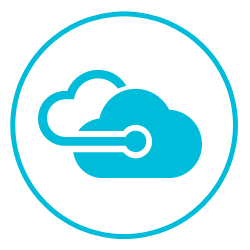



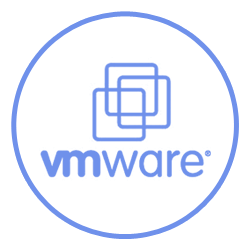









.png)



.png)
